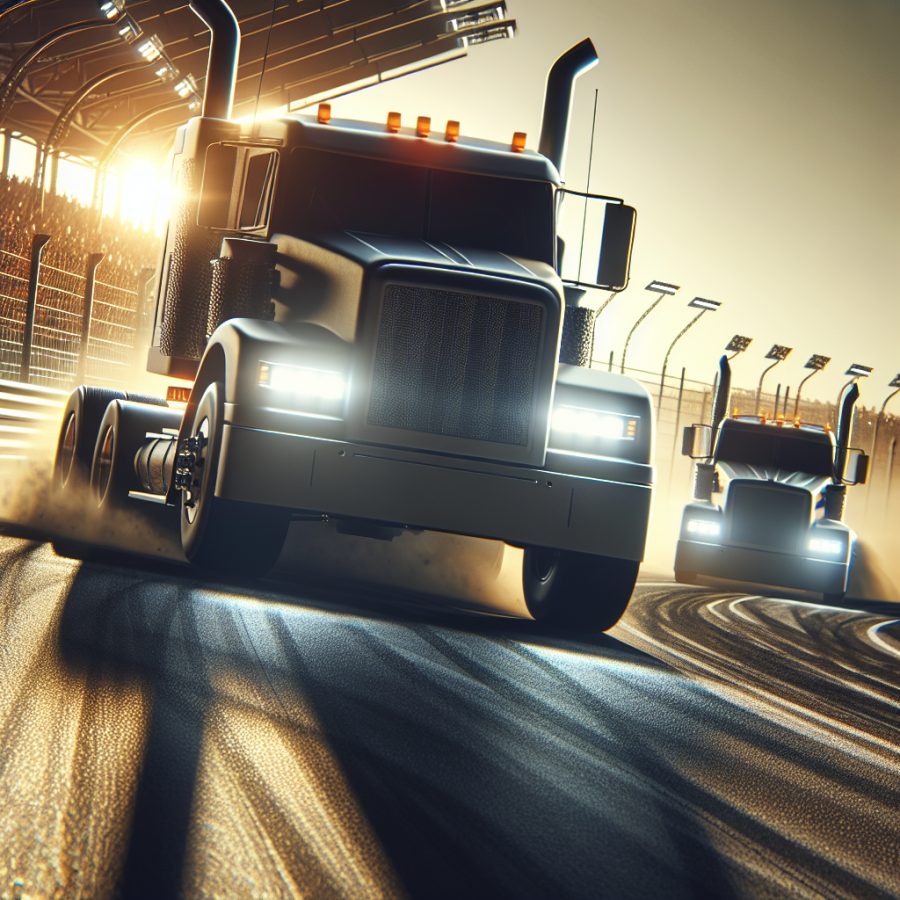Experiencing the Adrenaline Rush: An Inside Look at Truck Racing Events
As we delve deeper into truck racing, it's clear that these events are not just another motor sport—they're high-octane spectacles where massive machines defy the limits of speed and physics. This inside look at truck racing reveals the raw power and excitement behind these adrenaline-pumping competitions.
The trucks used in these races are a far cry from your average highway haulers. They're specially modified beasts with reinforced frames, high-powered engines capable of producing up to 1,500 horsepower, and advanced aerodynamics designed to keep these towering machines grounded at high speeds. These alterations are crucial, as a typical race truck can weigh upwards of five tons, demanding exceptional strength and durability from every component.
To ensure optimal performance, meticulous attention is given to the trucks' setup before they roar onto the track. Teams work tirelessly, tweaking engine calibrations, suspension settings, and tire choices. The right combination can make the difference between leading the pack and trailing behind in a cloud of dust.
The drivers of these mechanical giants are as formidable as the vehicles themselves. They possess a unique skill set to maneuver these titanic trucks with precision and guts, often inches away from competitors. The drivers need to be incredibly fit as well, as racing these trucks is a physically demanding task that requires endurance and strength to combat the intense G-forces, heat, and vibration during a high-speed race.
The race begins with a heart-stopping roar, as engines thunder in unison and trucks launch off the starting line. Instantly, the drivers are put to the test. Their focus is unyielding as they navigate tight corners, steep banks, and overtaking maneuvers, all while keeping their monstrous trucks under control at breakneck speeds. The slightest error could result in a spectacular, but potentially dangerous, incident.
Spectators are drawn in by the sheer spectacle; the noise, the speed, the smell of burnt rubber, and the sight of these trucks battling it out create an atmosphere that's electric with excitement. Overtakes are executed with a delicate balance of aggression and precision, and the audience responds with cheers and gasps as these leviathans of the track push the boundaries of what seems possible.
Halfway through the race, strategies come into play. Drivers and their teams must decide when to push their trucks to the limit and when to conserve fuel and tires—a critical decision that often determines the outcome.
The Evolution of Truck Racing: How It's Becoming the Ultimate Motorsport Spectacle
The adrenaline-fueled world of truck racing has undergone a remarkable transformation since its humble origins. Today, it stands as a monument to engineering excellence and driver skill, having blossomed into one of the most enthralling motorsport spectacles.
At the heart of this evolution is the considerable advancement in truck technology. Racing teams now work with cutting-edge components and sophisticated electronic systems that have elevated performance to unprecedented levels. Aerodynamics have played a pivotal role in this development, with truck designs now featuring sleek profiles and air-management systems that minimize drag and maximize speed. The result is a breed of high-speed racing machines that gleefully defy their once-clunky reputations.
Engine enhancements have also been game-changing. Modern racing trucks are equipped with turbocharged engines that deliver astonishing horsepower, while remaining surprisingly efficient. Fuel management systems and exhaust treatments have been refined for optimum power and sustainability, creating a more competitive and environmentally conscious racing environment.
Safety has been a crucial catalyst in the evolution of truck racing. Enhanced safety measures, both in terms of vehicle design—including reinforced cabins and advanced restraint systems—and in race operations, have increased confidence among drivers and promoters alike. This emphasis on safety has also helped attract new fans who can appreciate the sport without reservation.
The professionalization of the sport has attracted new sponsors, teams, and drivers from varied racing backgrounds, thus diversifying the talent pool and elevating the level of competition. This influx of expertise has not only enriched the sport but has also ratcheted up its appeal.
Media coverage and live broadcasts have brought truck racing into the limelight, showcasing the sport's excitement to a global audience. The visceral thrill of behemoth machines thundering down the track at breakneck speeds provides an audio-visual spectacle that's hard to match. Fueling this fire is the passionate fan base that truck racing has cultivated, with spectators reveling in the raw power and camaraderie that the sport encourages.
Today's races are organizationally sophisticated, with a series of international and national championships that reflect the sport's growing popularity. The European Truck Racing Championship and the NASCAR Camping World Truck Series in the United States are just a couple of examples where the sport showcases its finest competitors.
Truck racing has also embraced sustainability and innovation. As the automotive industry moves towards alternative power sources, the sport is starting to experiment with electric and hybrid technologies. This forward-thinking mindset not only helps reduce the carbon footprint but also keeps truck racing relevant in a world that's increasingly conscious of environmental issues.




